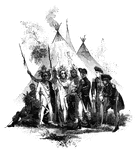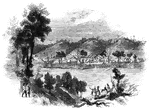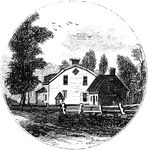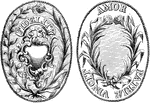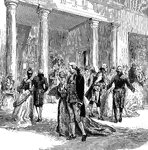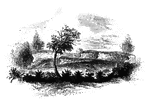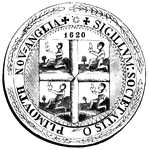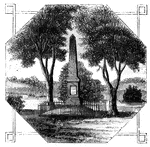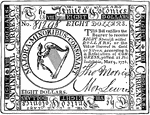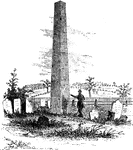
Burning Stamps
"Burning the Stamps in New York, during the opposition of the Stamp Act in 1764."—E. Benjamin Andrews,…

Butler House
The Butler House. John Butler was one of the leading Tories of Tyron county during the whole war of…
Butt's Hill, Looking South
"The view is taken from the American intrenchments on Butt's Hill. he windmill is on Quaker Hill. The…
View Looking North from Butt's Hill
"The view shows the intrenchments in the foreground. The Americans retreated past the houses in the…
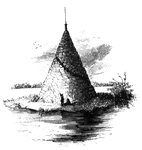
Cairn
Cairn on the St. Lawrence. This is probably the only structure of the kind on the American continent.…
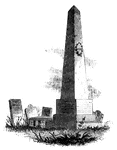
Caldwell's Monument
Caldwell's monument. The following are the inscriptions upon the Caldwell monument: East Side: "This…
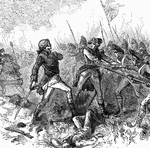
John Callendar Saved by a British Officer
"In Sullivan's ranks is John Callendar, of Massachusetts. He commanded the artillery at Bunk Hill, and…

Camp Ground
"View of the Camp Ground. This is from a painting by Tice, in my possession. The land on which the encampment…
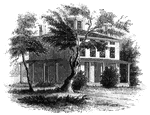
Campbell Mansion
Mansion of Judge Campbell. This pleasant dwelling is upon the northern verge of the town, on the road…

Campbell's Monument
Campbell's Monument. This rude memorial was erected in 1831, by J. W. Barber, Esq., of New Haven, the…

Cannon used at the time of the American Revolution
Cannon used at the time of the American revolution
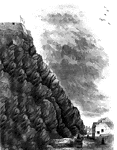
Cape Diamond
Cape Diamond, this is a view of the spot where Montgomery was killed. The cliff is Cape Diamond, crowned…
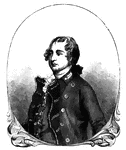
Sir Guy Carleton
Sir Guy Carleton, afterward Lord Dorchester, was Wolfe's quartermaster at the storming of Quebec, and…
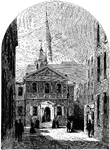
Outside View of Carpenter's Hall
An illustration of Carpenter's Hall in Philadelphia, where the First Continental Congress assembled.
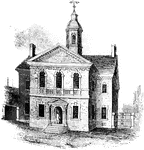
Carpenters' Hall
"Carpenters' Hall. This building is constructed of small imported bricks, each alternate one glazed,…
Cascades
The Cascades, on St. Ann's Rapids. These rapids are so called from the cirumstance that a village of…
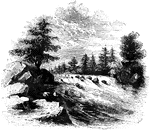
Catawba
"View of the Great Falls of the Catawba. This view is from the west side of the Catawba, looking northeast,…

Captain Cathcart
"Then came Lord Cathcart upon a powerful horse. He was chief of the knights. Two negro slaves wearing…

Caughnawaga Church
Caughnawaga church. This old church, now (1848) known as the Fonda Academy, under the management…

Chad's Ford
"View at Chad's Ford. This view is from the east bank of the Brandywine, looking southwest. The ford…

Chambers
Appearance of the chambers. The miners, when they branch off from the main shaft or avenue, leave pillars…
Charlestown
"Charlestown in 1775. No. 1 is Bunker Hill; 2, Breed's Hill; 3, Moulton's Point; 4, a causeway near…

Burning of Charlestown
"This picture was drawn by a British engineer at the time of the battle. The view is from Copp's Hill,…
Heights of Charlestown
"A profile view of the Heights of Charlestown, in the American Revolution."—E. Benjamin Andrews,…
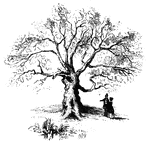
Charter Oak
The Charter Oak. This venerable relic is still virgorous, and is a "gnarled oak" indeed. It stands upon…

Chatham's Monument
"Chatham's monument, Westminster Abbey. William Pitt, the first Earl of Chatham, was born on the 5th…

Chatterton's Hill
"Chatterton's Hill, from the rail-way station. This is a view of the southeastern side of Chatterton's…
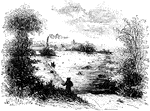
Cherokee Ford
"View at the Cherokee Ford. This view is from the east bank of the river. Toward the extreme right is…
![Distant view of Cherry Valley. Cherry Valley derived is name, according to Campbell, from the following circumstance: "Mr. Dunlop [the venerable pastor whose family suffered at the time of the massacre in 1778], engaged in writing some letters, inquired of Mr. Lindesay [the original proprietor of the soil] where he should date them, who proposed the name of a town in Scotland. Mr. Dunlop, pointing to the fine wild cherry-trees and to the valley, replied, 'Let us give our place an appropriate name, and call it Cherry Valley,' which was readily agreed to."](https://etc.usf.edu/clipart/13400/13460/cherry-vall_13460_mth.gif)
Cherry Valley
Distant view of Cherry Valley. Cherry Valley derived is name, according to Campbell, from the following…

The Chew Coach
The coach car of a rich Tory judge, Judge Chew. He had a driver and footman in gold-laced cocked hats.
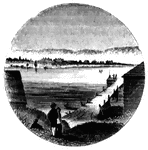
Chimney Point
Chimney Point Landing. This view is taken from the green in front of the inn at Chimney Point, looking…

Old North Church
The famous church in Boston, Massachusetts where the line "one if by land, and two if by sea" signal…

Clark's House
"Clark's House, Lexington. This building was standing when I visited Lexington in 1848. It was built…

Major George Rogers Clark
(1752-1818) Surveyor and soldier of the Revolutionary war. Led a militia group in Kentucky and after…

George Clinton
(1739-1812) General during the American Revolution and governor of New York. He was also Vice president…

Cochran Grave
Grave of Colonel Robert Cochran, who commanded a detachment of militia at Fort Edward at the time of…
Compo
Distant view of Compo. This view is from the top of a high hill northeast of the dwelling of Mr. Ebenezer…
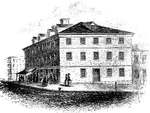
Congress House
"The Congress House. This view is from Baltimore Street, looking southeast. The ront on the left is…
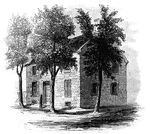
Constitution House
The Constitution House, Kingston. This house, the property and residence of James W. Baldwin, Esq.,…

Continental Bills
Fac-simile of the Continental Bills. The paper on which these bills were printed was quite thick, and…
